709-218-7927 The Landfall Garden House 60 Canon Bayley Road Bonavista, Newfoundland CANADA A0C 1B0 |
|---|
Solar Heater
Back in 1975 in Gawler, near Adelaide South Australia, a young man's fancy turned to solar water heaters. A four-square feet box, a sheet of copper and many feet of copper tubing, all painted matt black, a recessed sheet of glass, air-tight. It heated a four-gallon can of water to too-hot-to-touch within about five hours. Of course, Adelaide, mid-summer ...
My neighbour was not impressed: "Why didn't you just run a few lengths of three-quarter inch galvanized iron pipe back and forth across your galvanized iron roof?". He was right. I went 100% efficiency when there was no need. I couldn't wash my hands in the water, it was much too hot.
I began solar-cooking this year, and my new windows are proving such excellent heaters of my bedroom and study, that an old man's fancy turns to dreams of capturing sunlight during the winter months and pumping the heat into the bedroom and/or study.
This September the windows warm the room passively during daylight hours; at 25c the study is too hot for comfort, but suppose I could store heat in a reservoir during the day, and then release it at night. This would be exceeding fun in the bedroom, which drops to 13c in the middle of winter if I do not burn electrical energy in the 500w baseboard heater.
So: A solar water panel outside, angled to face the sun, and water pipes leading inside to a heat reservoir.
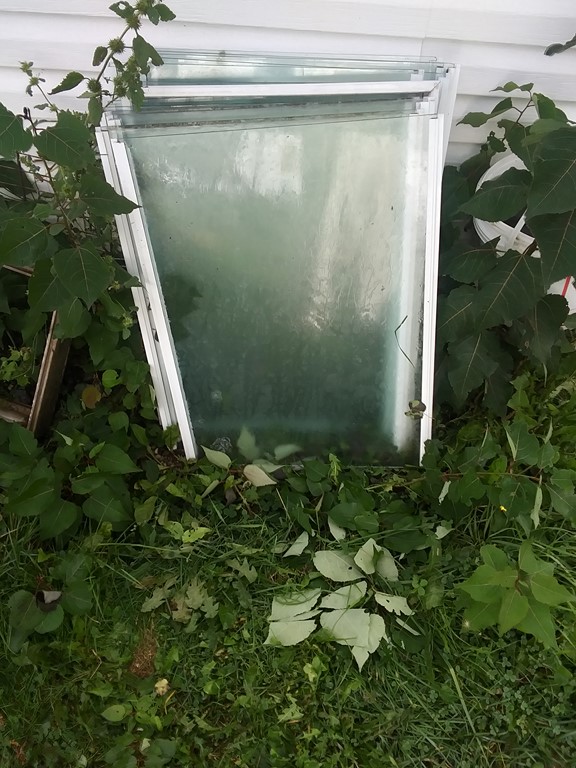
I have twelve panes 30"x21½" which are the small windows replaced in three rooms.. Allowing for some glass to be recessed in wooden frames, this is 600 square inches per frame, or fifty square feet of receptive glass.
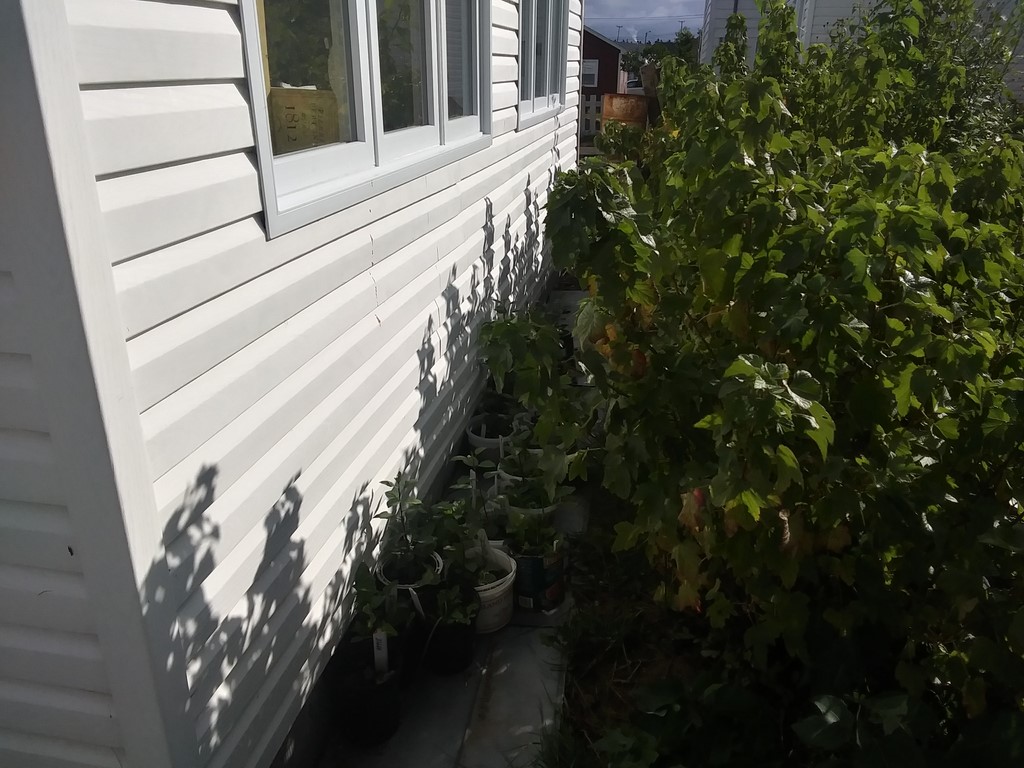
The distance from the study window to the ground is 49 inches; to the study floor 36 inches, a differential of thirteen inches, of which twelve inches may be useable.
The blackcurrant canes have yielded less than a margarine tub of berries in four years, and I will root them out. That should give me direct sunlight down to the base of the wall throughout the winter, maximizing my sunlight.
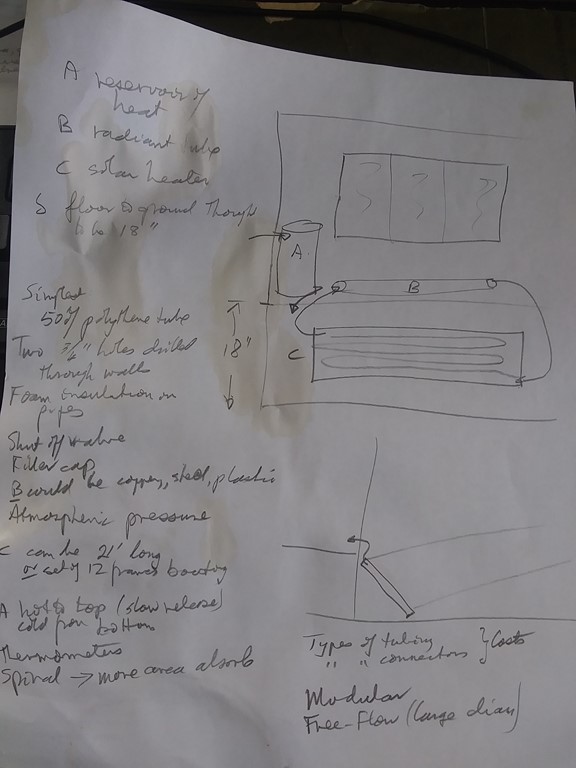
My first rough sketch. The three-panel window is at the top. I am not sure whether to install a pipe radiator or a water-tank reservoir. Perhaps both! My notes read:-
(1) A: reservoir of heat
(2) B: radiant tube
(3) C: solar heater
(4) I thought the difference in ground/floor height would be eighteen inches, but it is measured at thirteen inches.
(5) Simplest possible (see below) using polythene tubes.
(6) Two three-quarter inch holes drilled through the walls.
(7) Foam insulation on pipes
(8) Shut-off valve (see below)
(9) Filler cap
(10) Radiant tube (B) could be copper, steel plastic (see below)
(11) Atmospheric pressure
(12) Solar heater (C) can be twenty feet long, or a sequence of modular boosting frames (see below)
(13) Reservoir (A) can be hot-to-top (slow release) cold-from-bottom
(14) Thermometers
(15) Spiral tubes in solar heater for more area of heat absorption.
(16) Type of tubing, connectors available at Swyers
(17) Cost of tubing, connectors available at Swyers
(18) Modular (see below)
(19) Free-flow (large diameter tubing)
(20)
(21)
The lower diagram shows a modular panel angled towards the sun.
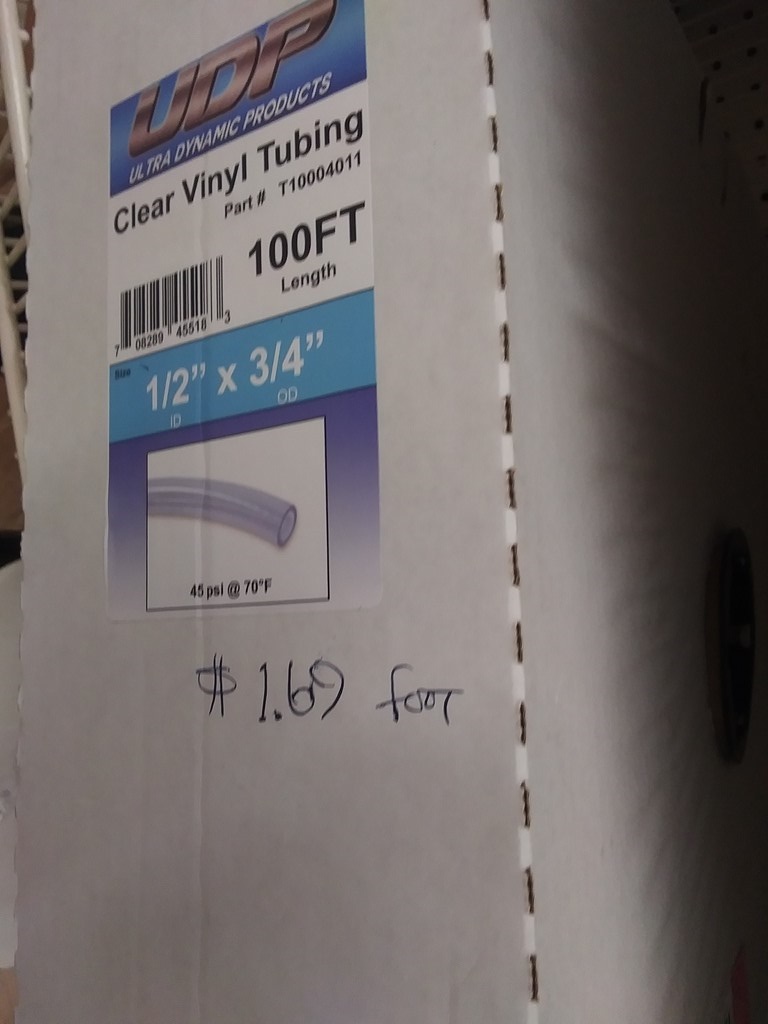
Swyers sells three-quarter inch polythene tube at $2/foot once taxes and delivery are included. How many feet do I need?
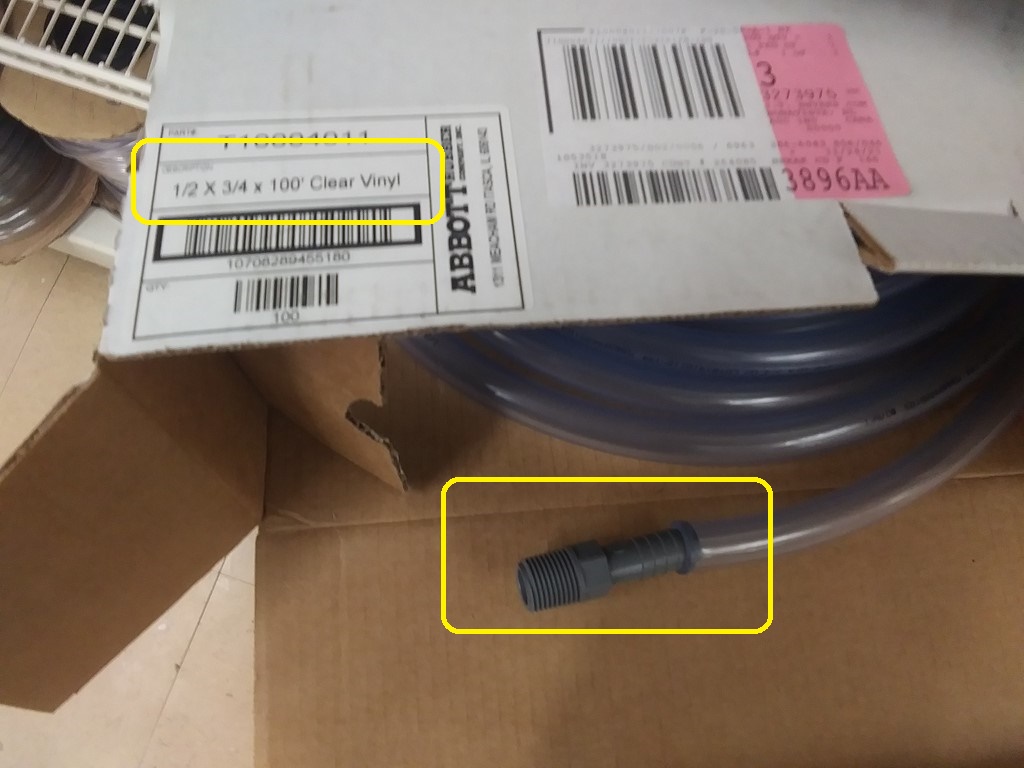
Swyers sells push-on fittings at who-knows-how-much. Let's assume $2 per fitting.
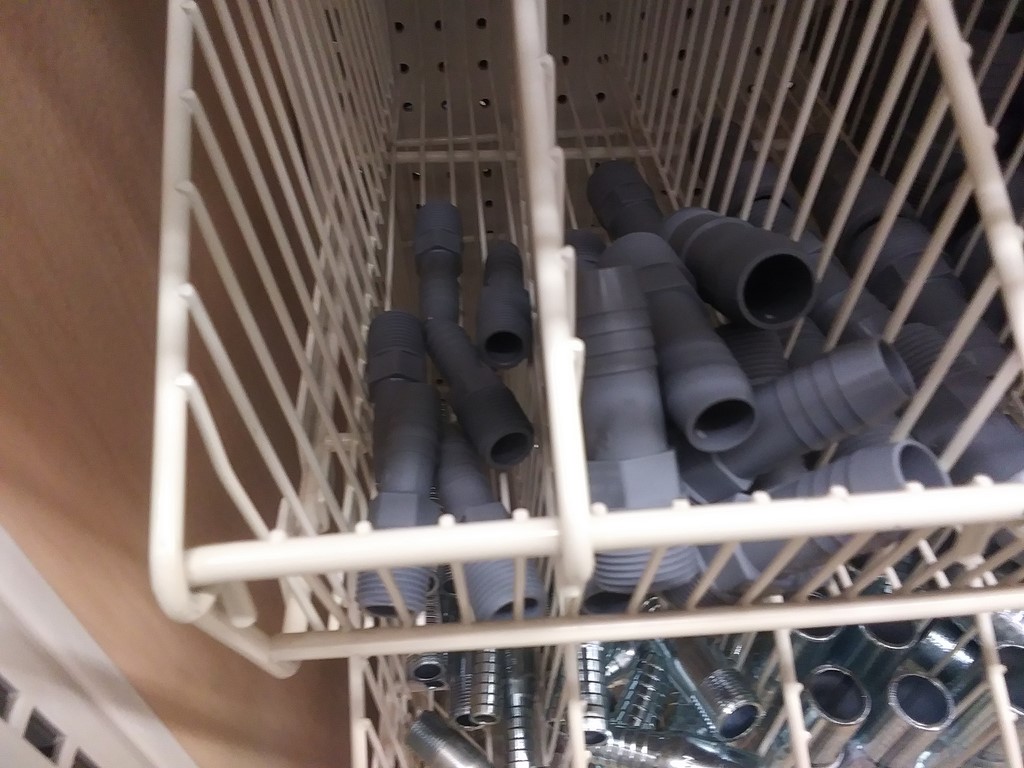
How many and what types (line, T-joint etc) fittings do I need?
Hurdles and Obstacles
Hurdles don't worry me too much; I can leap over them. Obstacles are different: I need to work around them or just remove them.
The biggest obstacle I see right now is freezing. In January 2022 the minimum temperature recorded was -14c. In February 2022 -12.5c
Nov 2021 |
Dec 2021 |
Jan 2022 |
Feb 2022 |
Mar 2022 |
Apr 2022 |
May 2022 |
|---|---|---|---|---|---|---|
-2.4 |
-9.7 |
-14 |
-12.5 |
-11.2 |
-3.2 |
-1.3 |
For seven months last winter, the lowest daily minimum dropped below freezing. When the lowest daily minimum is above freezing, I don't have to worry about frozen pipes. But obviously in the months when I am desperate (grin) for heat, I must deal with sub-zero temperatures.
During the day time there may be enough beamed solar energy to maintain the system above freezing, but during the night, this will not be the case.
I want a minimalist system.
I do not want a small electric pump pumping warm water from the bedroom to and through the heater for the sixteen hours of darkness each December. For one thing, an electric pump can break down or be thwarted by extremely low temperatures, it may not be up to the job, and when the circulation stops, I effectively have no pump at all.
I could argue that solar heat for seven hours a day (if that) is pretty well ineffective during the coldest month, and just set the system to hibernation. I would reap solar energy during the spring and autumn shoulders. That means disconnecting/draining the system and refilling it twice a year.
Running the cold outlet from the bedroom along the baseboard heater would deliver warm water into the solar panels, but what's the point of delivering energy to the outside air? I want to move energy from outside to inside.
These arguments are hypothetical for now because I have no data on volumes of water, BTU's and so on, just a knowledge that for seven months of the year the water will freeze. More than anything, these written thoughts give my mind something to work on.
Impact of freezing
The system will be simple, constructed from cheap components. What will happen when the system freezes?
(1) The water in the polythene pipes will freeze. I can see how well polythene pipes cope with frozen water by loading a sealed length with water and popping it in my freezer right now. Does the pipe crack and split, or is able to expand and then contract to accommodate the freezing?
(2) Presumably the radiator or reservoir, and the piping within my house will not freeze (unless the electrical power is lost), so the interior fittings will survive.
(3) The solar panels made of wood, glass and caulking will be OK. After all, those sliding windows coped with the freezing weather for, perhaps, twenty years, and caulking is made to survive freezing temperatures.
(4)
Reservoir of heat
In my bedroom who cares what a reservoir looks like? A four-foot high oxygen cylinder repurposed for my use. A collection of connected plastic pails. A steel plate or block. Large rocks. Buckets of sand.
Anything that will obtain heat from plastic tubing, and radiate it to the air. Perhaps some sort of cupboard enclosure so that heat does not escape the reservoir during the day, but open the cupboard door at night and drain the heat from the reservoir (more complexity, I know).
The reservoir could lie underneath my bed and heat the bed rather than the air. Would I have a second length of tubing circulating heated water inside my box-frame?
Radiant Tube
This too could take many forms. My first thought was one or more old car radiators. After all, the car radiator is designed for efficient transfer of heat from water to the outside air; admittedly with air pumped through the fins.
Shut-off valve
I see a need for being able to isolate components during maintatence. To replace the reservoir is no big deal; drain the system down to the floor level. But repairing a solar panel requires that I isolate the damaged panel and pull it out of the line.
Filler cap
How to refill the system? With town tap-water for sure. In summer time I could use a garden house brought in through a window and fill the system top-down, as we do for the car radiator, but once the hoses are put away, I am reduced to pails of water, a jug, and a funnel.
Modular
I tremble in terror at the prospect of building a twenty-foot wooden cabinet. But setting up an assembly line to build twelve identical 20"x30" panels is not quite so daunting.
A panel would be a recatangular wood frame made from 3"x1" rough timber. The timber would have a groove the thickness of the glass. The glass is held in place by the groove. Since the twelve panes are a standard size, so too are the frames.
Each frame would house eitherr a zig-zag or a spiral of polythene pipe. A zig-zag suggests efficient circulation while a spiral suggests maximizing heat capture.
The inlet and outlet positions should be at the same position, so that the outlet of the first module travels (horizontally) the minimum distance before entering the second module.
Thermometers
I would like to be able to insert a thermometer at many points along the system. For example, at the inlet and outlet of each module; entry to the room and exit from the room. Likewise at both sides of a reservoir or radiator.
Cost of tubing, fittings
[to be completed]
Phase 0
We start by buiding a single panel with a simple water reservoir, and we measure temperatures throughout the day. In this phase we include everything that we reasonably can that is prescribed for the final system.
We might run this phase through winter until it breaks through freezing or any other malfunction.